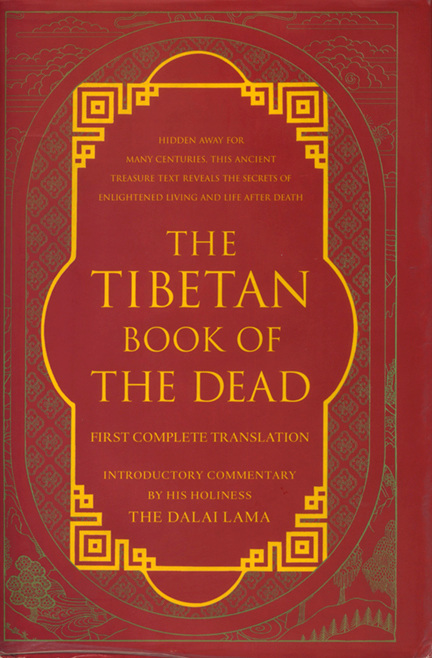Bardo Thodol: The Liberation Through Hearing During the Intermediate State, it is often referred to in the West by the more casual title, Tibetan Book of the Dead, a name which draws a parallel with the ancient Egyptian Book of the Dead, another funerary text.
The Tibetan text describes, and is intended to guide one through, the experiences that the consciousness has after death, during the interval between death and the next rebirth. This interval is known in Tibetan as the bardo. The text also includes chapters on the signs of death, and rituals to undertake when death is closing in, or has taken place. It is the most internationally famous and widespread work of Tibetan Nyingma literature.
According to Tibetan tradition, the Liberation Through Hearing During the Intermediate State was composed in the 8th century by Padmasambhava, written down by his primary student, Yeshe Tsogyal, buried in the Gampo hills in central Tibet and subsequently discovered by a Tibetan terton, Karma Lingpa, in the 14th century.[7][8] There were variants of the book among different sects.[9] The Tibetan Book of the Dead was first published in 1927 by Oxford University Press. Dr. Walter Y. Evans-Wentz chose this title because of the parallels he found with the Egyptian Book of the Dead.[10]
The Liberation Through Hearing During the Intermediate State is recited by Tibetan Buddhist lamas over a dying or recently deceased person, or sometimes over an effigy of the deceased. The name means literally "liberation through hearing in the intermediate state".
